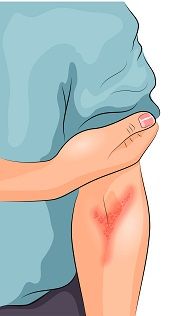Article
Reviewing Potential Atopic Dermatitis Treatments and Pathogeneses
Author(s):
A recent review of current research on atopic dermatitis (AD) treatments found that a clearer understanding of the pathogenesis of the phenotypes involved in the disease will lead to advances in new therapies.

A recent review of current research on atopic dermatitis (AD) treatments found that a clearer understanding of the pathogenesis of the phenotypes involved in the disease will lead to advances in new therapies. The review was conducted by colleagues at the Department of Pediatrics at Changhua Christian Children Hospital in Taiwan and was published in the Journal of Immunobiology in September of 2016.
“Although traditional therapeutic strategies are efficacious in ameliorating the symptoms of AD in most patients, sometimes it is a tough challenge for physicians since AD is catastrophic and difficult to treat,” state the reviewers. They go on to say that research is underway that will lead to a better understanding of the pathogenesis of AD and that “this article reviews some clinically potential trials and therapeutic reports of AD in animal models.”
Scientists do not currently have a complete understanding of the pathogenesis of AD, but the reviewers say that “two major pathophysiological mechanisms are 1) abnormalities in the epidermal structure and function, and 2) skin inflammation due to different causes such as inappropriate immune response to encountered antigens.” Both mechanisms could be at play, and neither is known to be primary.
Filaggrin, Th2-associated cytokine interleukin-33 (IL-33), thymic stromal lymphopoietin may all be associated with a poor skin barrier. Additionally, “The polymorphism of Claudin-1, a protein in tight junction, was reported to be associated with AD in early life when exposed to mold,” say the reviewers. A recent study also found that AD patients sometimes have a downregulation of bleomycin hydrolase gene expression, which leads to a decreased production of amino acids and dry skin.
Cytokine-target therapy (IL-23), human monoclonal antibody therapy, supplements of long chain omega-3 fatty acids, melatonin, and microRNAs all present opportunities to develop novel therapies for AD. Yet, all of those approaches require significantly more study.
Vitamin D supplementation is another area of interest in treating AD, however, the reviewers say, “the literature on vitamin D and AD have resulted in controversial findings; the role of vitamin D in AD is far from clear.”
“In allergy, oral administration of certain allergens may prevent and reduce both contact dermatitis and AD,” say the reviewers, adding that “numerous independent experiments using different antigens have resulted in a distinct effector for the induction of oral tolerance.”
The authors say there are three mouse models of AD: those induced by epicutaneous applications of sensitizers, transgenic mice, and mice that spontaneously develop AD-like symptoms. Each of the three could be used to gain a greater understanding of the mechanisms that underlie the pathogenesis of AD.
Related Coverage:New Trials Bolster Dupilumab's “First Line Treatment” Potential for Atopic Dermatitis
Atopic Dermatitis: New Drugs Needed
Immunosuppressants for Atopic Dermatitis: Safe, Effective in Long-Term


